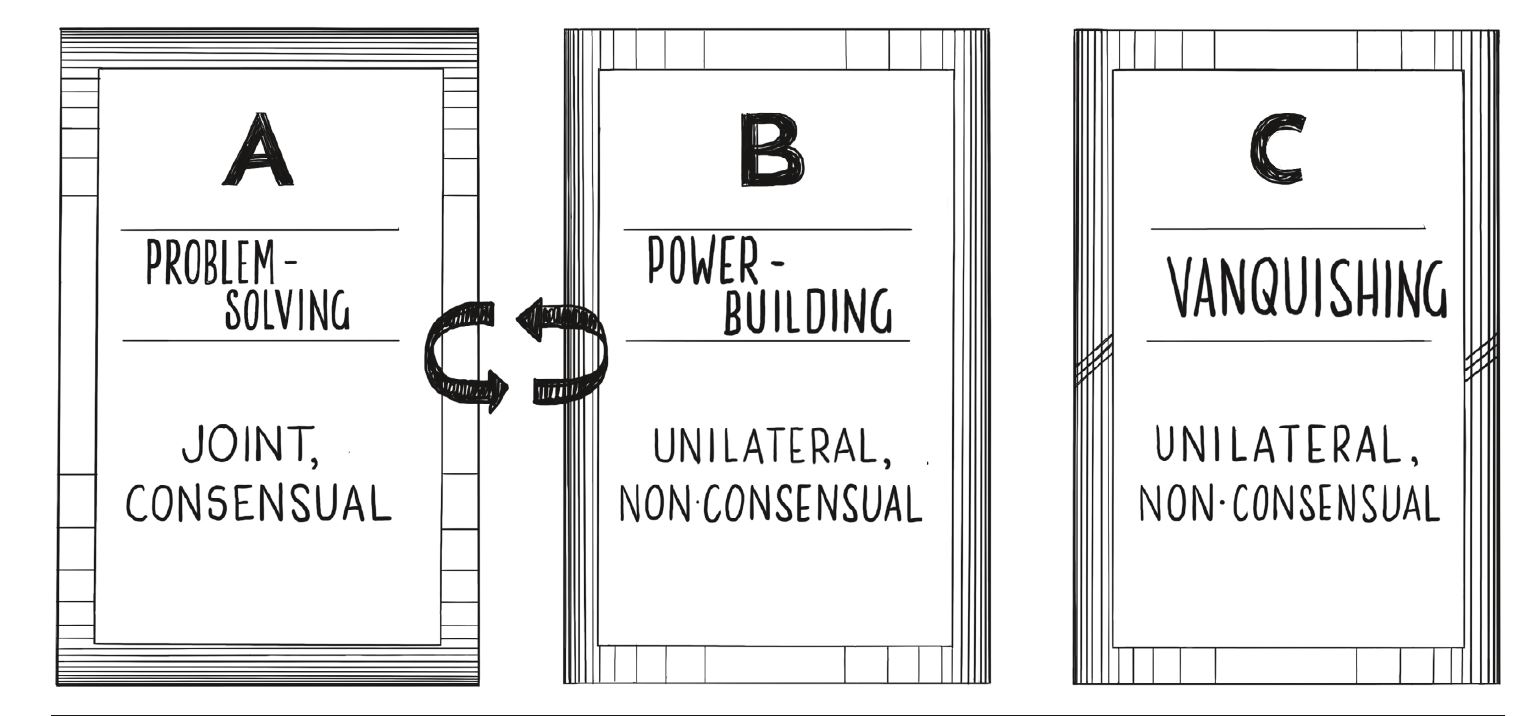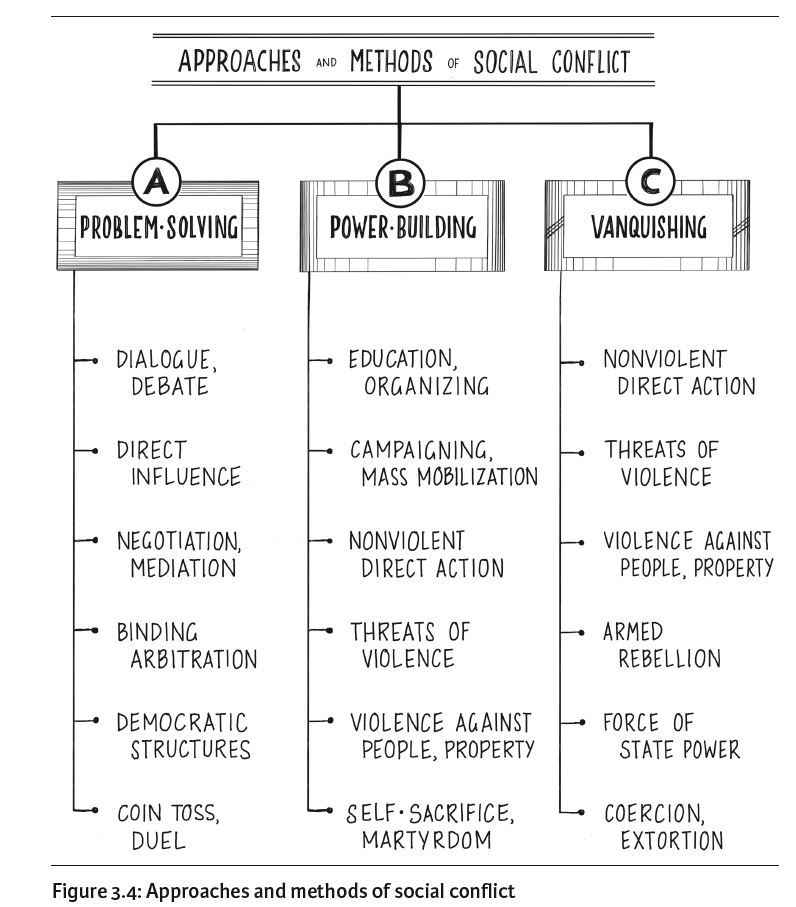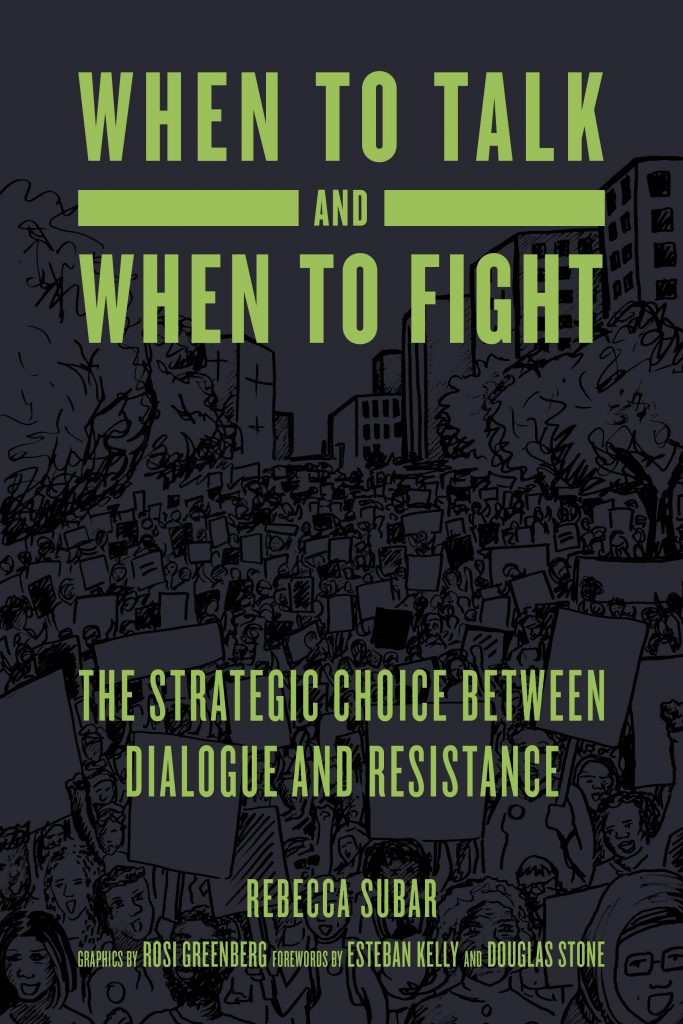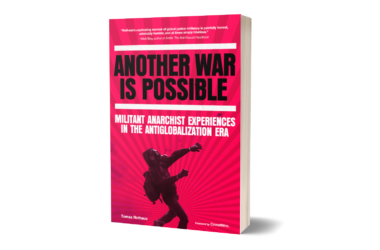Contents
Introduction
Conflict is when your people want something, and the other side isn’t giving it up. Conflict emerges at the moment your side needs to decide whether to struggle to build power or sit down to negotiate with the other side: whether to talk or to fight. – Rebecca Subar
Rebecca Subar’s book, When to Talk and When to Fight: The Strategic Choice between Dialogue and Resistance (2021), provides a model for “talking across the modalities of negotiation and resistance.” Drawing on social movement history, case studies, and personal experiences the book divides conflict activity into three key areas, “talking, fighting for power, and fighting to vanquish an opponent”.
In discussing different currencies of power and the advantages, disadvantages, and dilemmas groups face in deciding what kind of approach to take to conflict it helps activists to better understand one another values as well as to work more effectively, both alone and in concert.
In the following extract from the book Subar provides a summary of her basic model.

Columns A and B
What’s the difference between Column A and Column B? In Column A, opponents use joint consensual methods to resolve their conflict. They negotiate. In Column B, a group acts unilaterally against its opponents to build power.
You can distinguish Column A activity from a Column B activity by both the purpose and the nature of the activity. Column A and Column B have distinct qualities, so it’s easy to remember the difference. The quintessential Column A activity is negotiation, and the centerpiece of Column B activity is protest.
Sure, some Column A actions resemble protest, and some Column B actions resemble reconciliation. For example, running for office is in Column A, since competing in an election means freely participating in an agreed upon activity with others who are also participating freely. With here doesn’t mean that competing candidates have friendly relations. It means they are participating in a joint consensual process for the purpose of resolving the question of which candidate should serve in office.
An example of a Column B action that you might think of as more “joint and consensual” is circulating petitions for a legislative or corporate campaign. Gathering signatures to get on a ballot is one thing, since all sides participate according to agreed-upon rules, but gathering signatures to petition an elected official or corporate executive to change a policy is not joint consensual activity. It is an action taken by groups against other individuals or groups for the purpose of building power.
When a group has built its power in Column B, and its power is roughly balanced with that of its opponent, the two groups can “meet” in Column A to work out a resolution to the problem. Because they are now engaged in a negotiation of equals, the groups have a chance to resolve the conflict by satisfying the needs and desires that underlie it.
Columns B and C
What’s the difference between Column B and Column C? They are so much alike! In Column B, groups use unilateral nonconsensual methods against their opponents to build power. They are building their power to make it possible to go to Column A—that is, to resolve the conflict together with their opponents.
In Column C, groups use the same methods as Column B—community organizing, protest, nonviolent direct action, or even taking up arms—but they are on a different journey. Their action is intended to neutralize their opponents, to metaphorically, if not physically, trample them. Column C activity is power-building activity of the sort that leaves one group with all the marbles. Column C action means joint consensual action to prevail over an opponent, clearing the way to resolve the conflict unilaterally.
Does that mean that groups in Column C are trying to kill people? Possibly, but violence and killing can occur in Column B too. Plenty of battles, large and small, end with a truce and a treaty. Column B and Column C activities have different purposes though. Groups in Column C are trying to reduce the power of their opponents to insignificance. If a group or social movement sets out to abolish the fossil fuel industry without its consent, that group is acting in Column C—even if every owner, investor, scientist, and worker in the fossil fuel industry lands a good job in the renewable energy sector. If, on the other hand, the same group sets out to pressure the fossil fuel industry into making incremental changes through legislative or corporate policy change, that group would be acting in Column B.
The actions groups take in Columns B and C may seem similar, but they are going different places. Groups in Column B are building power to take over to Column A for joint resolution. Groups in Column C are building power to prevail over their opponents and resolve their conflict unilaterally. In short, power is built in Column B and Column C, and conflicts are resolved in Column A and Column C.
For groups that define their active wants as the entire menu of justice for all, winning requires either a Column C strategy or a chain of Column B campaigns in a long-term struggle to change the fundamental arrangements of social power. Resistance must be constant.
Civil rights organizer Ella Baker said, Until the killing of black men, black mothers’ sons, becomes as important to the rest of the country as the killing of a white mother’s son—we who believe in freedom cannot rest until this happens.
This incremental use of mobilized power by the weak to change the prevailing arrangement of institutionalized power constitutes one of the most powerful applications of Column B.
Do groups in Column B and Column C know which column they are in? Not necessarily. In our organizations and communities, as in society, changemakers frequently take action without a theory of changemaking or without a clear strategic plan. The model described in this book can enable you to decode the strategies of groups in conflict, whether or not those strategies are intentional. In addition, the model can guide you to develop your own conflict strategy with awareness and intention, maximizing the chances the conflict will be resolved in a way that gets you what you need and desire.

Book Overview
When to Talk and When to Fight is a conversation between talkers and fighters. It introduces a new language to enable negotiators and activists to argue and collaborate across different schools of thought and action. Weaving beautiful storytelling and clear analysis, this book maps the habits of change-makers, explaining why some groups choose dialogue and negotiation while others practice confrontation and resistance. Why do some groups seemingly always take an antagonistic approach, challenging authority and in some cases trying to tear down our systems and institutions? Why are other groups reluctant to raise their voices or take a stand, limiting themselves to conciliatory strategies? And why do some of us ask only the first question, while others ask only the second?
Threaded among examples of conflict, struggle, and change in organizations, communities, and society is the compelling personal story that led Subar to her community of practice at Dragonfly, advising leaders in social justice organizations on organizational and advocacy strategy. With lucid charts and graphs by Rosi Greenberg, When to Talk and When to Fight is a brilliant new way of talking about how we change the world. In his foreword, Douglas Stone, coauthor of the international best-seller Difficult Conversations, makes the case that negotiators need this language. In a separate foreword, Esteban Kelly, cofounder of AORTA Anti-Oppression Resource and Training Alliance, explains why radicals and progressives need it. If you are a change-maker, you will soon find yourself speaking this language. Be one of the first to learn it. (Source: Publisher’s website)
Obtain a copy of When To Talk and When To Fight from the publisher’s website.
Rebecca Subar taught Peace and Conflict Studies at West Chester University from 2005 to 2019. She is a senior partner at Dragonfly, where a multiracial band of consultants supports organizations that make social change. She has coached leaders of political advocacy groups large and small on their race consciousness, their organization’s growth, and their strategy for changing the world.







